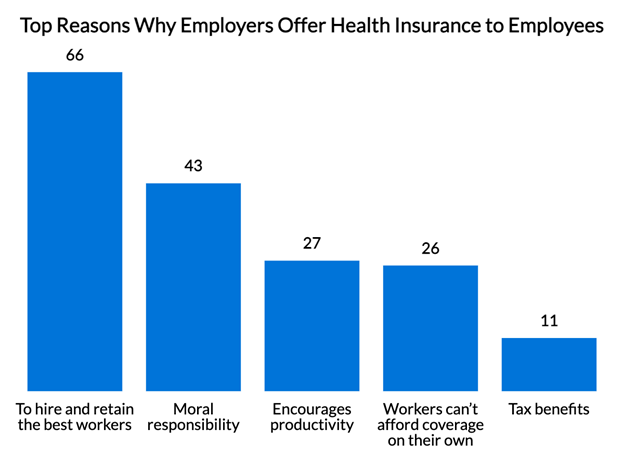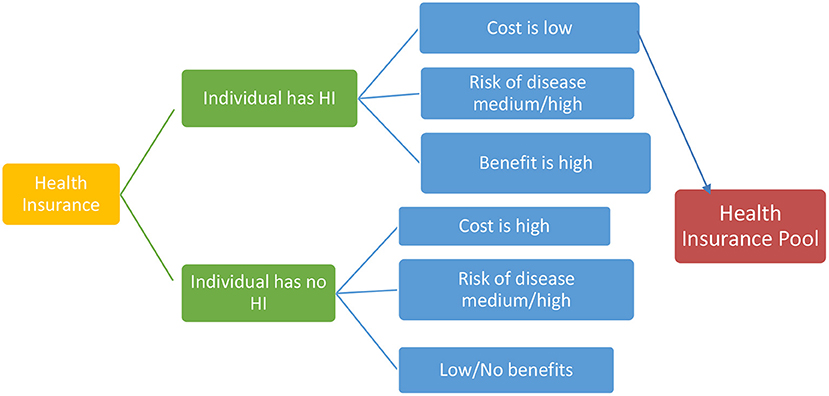Facts About Medicare Advantage Agent Revealed
5 Simple Techniques For Medicare Advantage Agent
Table of ContentsThe Facts About Medicare Advantage Agent UncoveredIndicators on Medicare Advantage Agent You Need To KnowWhat Does Medicare Advantage Agent Mean?

adheres to from perplexing the fairly young age profile of the uninsured with the better wellness, generally, of younger persons. This covers the web link in between wellness standing and medical insurance. For those without accessibility to workplace health insurance, poor health and wellness is a potential obstacle to purchasing nongroup insurance coverage since such insurance coverage may be highly valued, omit preexisting problems, or be merely not available. The number of uninsured Americans is not particularly huge and has not transformed in the last few years. 7 out of 10 respondents in a country wide depictive study believed that less Americans lacked medical insurance than actually do(Fronstin, 1998). Roughly fifty percent(47 percent )believed that the variety of people without medical insurance reduced or continued to be continuous over the latter fifty percent of the last decade(Blendon et al., 1999). This decrease of almost 2 million in the number of individuals 'without insurance policy (a reduction
of around 4 percent)is definitely a favorable modification. With a softer economy in 2000 the most up to date reported gains in insurance protection might not continue(Fronstin, 2001 ). The decrease in the number of uninsured will not proceed if the economic climate continues to be slow and healthcare expenses remain to outmatch inflation. This is because the data were gathered for a period of strong economic performance. Of the estimated 42 million people who were uninsured, almost regarding 420,000(regarding 1 percent)were under 65 years of age, the age at which most Americans end up being qualified for Medicare; 32 million were adults in between ages 18 and 65, around 19 percent of all adults in this age; and 10 million were kids under 18 years of age, concerning 13.9 percent of all youngsters (Mills, 2000). These quotes of the variety of individuals without insurance are created from the yearly March Supplement to the Existing Populace Survey (CPS), carried out by the Census Bureau. Unless or else noted, nationwide price quotes of individuals without medical insurance and percentages of the population with various sort of coverage are based upon the CPS, the most commonly used source of price quotes of insurance protection and uninsurance prices. These surveys and the estimates they produce are defined briefly in Table B. 1 in Appendix B - Medicare Advantage Agent. These studies vary in size and tasting techniques, the questions that are inquired about insurance coverage
The Definitive Guide to Medicare Advantage Agent
coverage, and the moment period over which insurance policy protection or uninsurance is measured(Lewis et al., 1998, Fronstin, 2000a ). Still, the CPS is particularly helpful due to the fact that it generates yearly estimates reasonably swiftly, reporting the previous year's insurance coverage approximates each September, and due to the fact that it is the basis for a constant set of quotes for greater than two decades, enabling for analysis of fads in coverage with time.

The 2-Minute Rule for Medicare Advantage Agent
The connection between wellness insurance and accessibility to care is well established, as recorded later in this chapter. The connection between health and wellness insurance policy and health and wellness outcomes is neither straight nor basic, an extensive professional and health and wellness solutions research literary works web links health insurance policy protection
to improved enhanced accessibility care, better much better, and improved enhanced and population populace statusCondition The 2nd record, on personal health and wellness end results for uninsured adults, is stood for by the innermost circle of the figure, while the 3rd report, on family members health, includes the topics of the second report yet highlights a different device of evaluation, specifically, the family.
It concentrates especially on those without any health and wellness insurance policy for any kind of length of time. The problems faced by the underinsured are in some areas similar to those faced by the uninsured, although they are normally much less severe. Uninsurance and underinsurance, however, include distinctly different policy problems, and the approaches for addressing them may differ. Throughout this research and the five reports to comply with, the major emphasis gets on individuals with no health insurance and thus no assistance in paying for healthcare beyond what is available through charity and safety net establishments. Medical insurance is a powerful factor influencing receipt of care because both individuals and physicians react to the out-of-pocket cost of solutions. Medical insurance, however, is neither necessary neither adequate to access to medical solutions. Nevertheless, the independent and direct effect of health
insurance policy coverage on access to health and wellness services is well developed. Others will certainly acquire the healthcare they need also without health and wellness insurance, by paying for it expense or seeking my latest blog post it from providers who provide treatment totally free or at highly subsidized prices. For still others, medical insurance alone does not guarantee invoice of care due to other nonfinancial barriers, this content such as an absence of healthcare providers in their area, restricted accessibility to transport, illiteracy, or etymological and cultural distinctions. Official research concerning uninsured populations in the USA dates to the late 1920s and early 1930s when the Committee on the Price of Healthcare created a collection of records about funding physician office visits and hospital stays. This concern became significant as the numbers of medically indigent climbed up throughout the Great Anxiety. Empirical researches regularly support the web link in between access to care and enhanced wellness results(Bindman et al., 1995; Starfield, 1995 ). Having a regular resource of treatment can be considered a predictor of gain access to, as opposed to a direct procedure of it, when health and wellness outcomes are themselves used as gain access to signs. This expansion of the concept of accessibility dimension was made by the IOM Board on Keeping Track Of Gain Access To to Personal Wellness Care Services(Millman, 1993, p. Whether or not parents are insured appears to influence whether their children get treatment along with just how much careeven if the kids themselves have protection(Hanson, 1998). The wellness of moms and dads can impact their capability to care for their children and the degree of family members stress. Stressing over their children's accessibility to care is itself a resource of stress and anxiety for moms and dads. Three chapters follow in this report. Phase 2 supplies an introduction of exactly how go now employment-based medical insurance, public programs and specific insurance policy policies operate and interact to give considerable yet incomplete coverage of the united state populace. This consists of an evaluation of historical fads and public policies affecting both public and exclusive insurance coverage, a conversation of the interactions amongst the different kinds of insurance, and an assessment of why people relocate from one program to another or wind up
